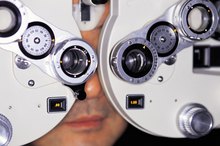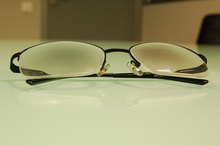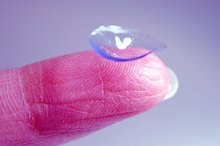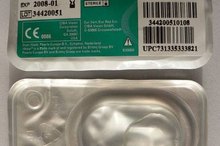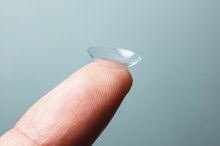How to Read Contact Lens Power
Reading contact lens prescriptions can be daunting; understanding them can be more so. With a little help, you can read the power of your contacts, and understand what it means, to help you become better informed.
If you are experiencing serious medical symptoms, seek emergency treatment immediately.
Reading the contact lens power
On the contact lens box, read the prescription information from left to right. The prescription should unfold in the following way: Eye, Power (sphere), BC, Dia and Brand. The Eye column will contain either OD, OS or OU, which mean right eye, left eye or both eyes, respectively. This tells you what eye the prescription is for.
How to Identify Eye Grade
Learn More
Read the next column, which will be the power of the contact for that eye. Power is measured from 20.00 to +20.00 (in dioptres), and this equates to the amount of compensation needed in the eye. It basically reflects the extent of the nearsightedness/myopic (a negative number) or farsightedness/hyperopic (a positive number).
Read the following chart to understand what your power or sphere means (obtained from mdsupport.org):
Snellen----Estimated Prescription 20/10__Plano (zero/0) 20/15_Plano 20/20Plano to -0.25 20/30-0.50 20/40__-0.75 20/50_-1.00 to -1.25 20/100-1.75 to -2.00 20/200-2.00 to -2.50
These are the most commonly used powers. If your power was in the positives (meaning you are farsighted), then the snellen chart ratio would grow larger as opposed to smaller.
How to Use a Snellen Chart
Learn More
Learn what the Snellen chart means. When having an eye test, one eye is covered at a time, and the vision is recorded. In the Snellen ratio of 20/20 (what we've categorized as normal eyesight), the first 20 is the distance of the test-20 feet. The second 20 is the distance a normal eye can see at the test-20 feet. Thus, 20/20 is "normal" eyesight. If, for instance, your ratio is 20/40, then your eye sees the test at 20 feet, where a normal eye could see it at 40 feet, and so on down the list. Therefore, the power of your contact lens essentially tells you the compensation needed for your eyes so that they can see at 20/20.
Tips
The prescription table on your contact lenses may vary greatly in style and layout, but they all present the same information. Just look around for your power number, you are bound to find it.
- On the contact lens box, read the prescription information from left to right.
- If, for instance, your ratio is 20/40, then your eye sees the test at 20 feet, where a normal eye could see it at 40 feet, and so on down the list.
Related Articles
Tips
- The prescription table on your contact lenses may vary greatly in style and layout, but they all present the same information. Just look around for your power number, you are bound to find it.
